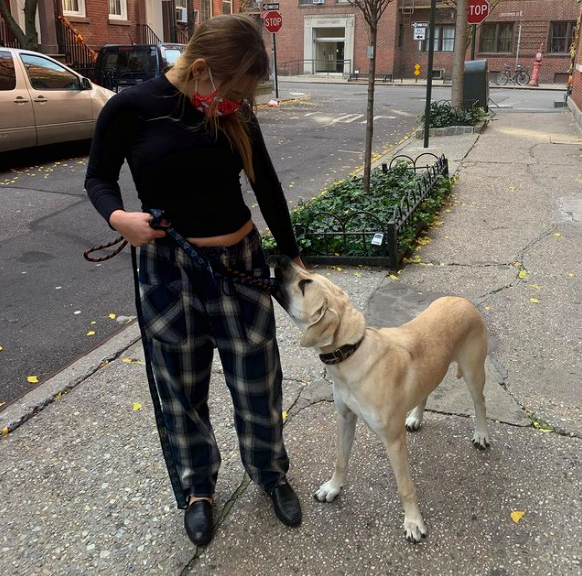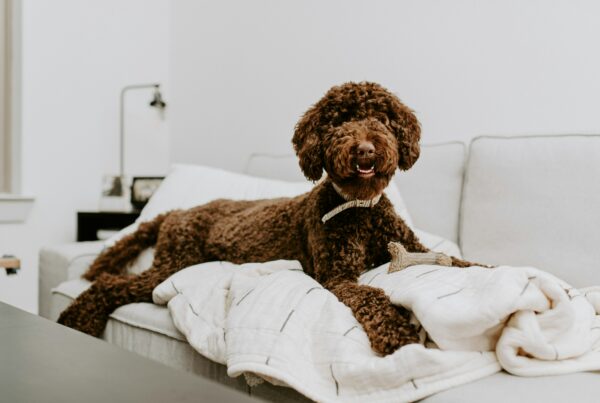There are certain things that every dog parent should know, especially those who are new to dog training.
Dog training is essential, and it even enhances the bond that you and your dog share.
There are a lot of things that you need to know and to understand about your dog before you can even begin to effectively train them.
One of the most important things is understanding how our dogs communicate with us because that allows us to meet AND anticipate their needs proactively.
We are also going to discuss other things like routine and how to use your voice, which are both useful to know for dog training.
Let’s get into the 5 things every dog training parent should know.
Learn Your Dog’s Language
As we all know, dogs cannot talk like we do. So, dogs have to communicate with us in different ways by using certain body cues and signals.
Dogs can communicate vocally with the use of different barks, whines, and growls.
Their methods of communication go much deeper than that though, and by paying attention to your dog’s posture, facial expressions, and general body language you can begin to really understand.
Every dog is different, but there are several body cues which we can generalize.
Tail Wagging
It’s a common belief that a dog wagging its tail means happiness. Well, not exactly. It only means emotional arousal. It could be excitement, or even frustration.
The speed, direction, and position of the wagging tail make a difference.
The faster the wag, the more aroused the dog. Long and slow side-to-side wagging means relaxed, like how some dogs do when they greet others. A fast twitch-like wagging means high arousal, possibly in a negative way – such as an alert guard dog.
Posture
As for posture, some are quite general and easy to interpret.
Such as, when a dog’s weight is shifted forward, trying to get closer to something, this usually indicates interest, unless paired with aggressive body language like a twitching tail held high.
Another ‘easy’ one is called the play bow; when a dog has its chest to the ground but their rump is still in the air. As the name implies, the dog is trying to initiate play.
Then, there are other postures which have various different meanings, such as the paw raise. When a dog of a pointing breed, such as an English Setter, raises their paw, this is to indicate nearby prey. Paw raising is a part of pointing behavior training.
So, as you can see, some body language is easy and natural to interpret, whereas others not so much.
Facial Expressions
Lastly, let’s go over some facial expressions. A lot of the time, a dog’s facial expression is similar to that of a human. They don’t use them in the same ways though.
Take yawning, for instance. For people, this means fatigue or disinterest. Dogs use yawning to calm themselves in tense situations and to calm others, including their owners. So, yawning essentially means stress relief.
Next up; smiling. When dogs show their teeth, this is a warning. If the corners of your dog’s lips form a C-shape, this is definitely aggressive language.
However, when a dog smiles slightly, mouth hanging open while panting normally and not growling, this is a submissive grin. It indicates happiness and relaxation.
Train Basic Commands
There are a couple of commands that are absolutely basic, and every dog parent should start with them.
The main basic commands are: come, sit, down, stay, leave it/drop it, and heel and their name.
It doesn’t matter exactly how you call these commands, just make sure you keep it short and simple. If you use words, keep it to a minimum of one to two words, and feel free to use specific hand gestures too. For more commands and dog training advice particularly for puppies check out this article – puppy training – the ultimate guide.
Training Methods
Training doesn’t have to be dull and boring for neither you or your dog, you can make it fun!
Remember to keep training sessions short and sweet, keep an eye on their body language, and always reward good behavior and give no attention to unwanted behaviors. Whatever you do, do not reward any bad behavior.
Always have patience and be consistent.
Positive reinforcement is the best way to go. There are many methods worth mentioning, but I am just going to touch on clicker training.
Clicker training is a method based on a bridging stimulus, which is often a clicker.
The clicker is used when your dog has done the correct command and is then rewarded with a treat. The timing of the click is key, as it has to be done at the exact moment your dog has done what you want.
Use your Voice
When trying to get your dog’s attention, your voice is important. Especially your tone and volume.
A person’s tone is the main indicator of our intentions, for a dog. When training, if you sound angry or frustrated, your dog will begin to negatively associate learning.
If you always speak loudly to your dog when training, it’s likely your dog tunes you out. Always use a normal tone of voice, so that when you need to use your correction voice it grasps their attention for effectively.
Routine
It is important to establish a routine into your dog’s life, even more so with puppies. Dogs learn to trust you when they know what to expect.
By forming a routine, your dog will develop good bladder and bowel control between walks and anticipate meal times.
Introduce house rules as early as possible. Whether or not your dog is allowed on furniture, or if any parts of the house are off limits, you need to show your dog what they can and can’t do and make it clear.
Puppy Training
Pups have different training needs specific to their stage of development, just as babies do. Puppies, like babies, go through a teething phase, two key socialization months (5, 8) and also learn how to meet, greet, initiate play and exit a group of dogs respectfully and peacefully- in doggy language.
Before you get concerned that your dog is “naughty” or “hard to train” be sure to check in with that phase of development they are in and meet those needs straight on! This will help you in the long run. A human is never going to be a puppy so even if you don’t mind your dog chewing on your face, it’s better done with another puppy his/her age- which is why dog daycare, dog socialization groups and playdates are much encouraged! For other teething matters, we highly recommend various types of textures and materials especially ones formulated for teething and puppies. Appropriate soft treats also work well too in terms of weight management for positive and treat training styles.
Love our content? Share it with a friend or link it to social media. Like short clips of cute household pets? Training tips? Follow us on instagram @nydognanny or on YouTube at nydognanny. Have some news you needs to get to dog and cat parents stat? Email info@newyorkdognanny.com with your article pitch.




